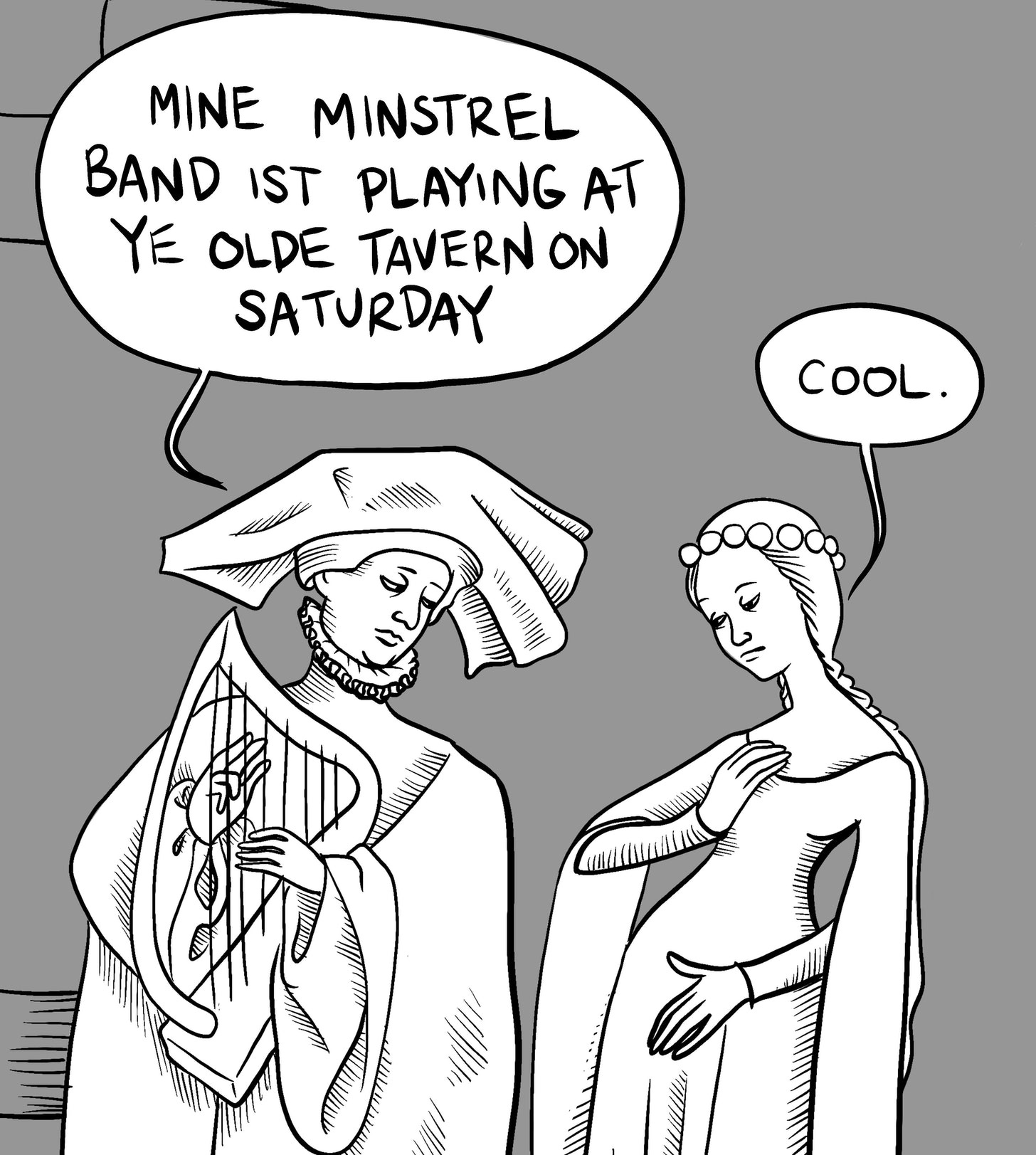This week, we interviewed Becca Lee, who writes The Haunted Librarian, a publication that showcases original comics alongside perspectives and anecdotes from art history.
This interview has been lightly edited for length and clarity.
What’s your Substack about in one sentence?
The Haunted Librarian is a spooky lil’ comic inspired by art history and the occult.
You have a background in art history. How did you get into comics?
I love this question, because it should really be the other way around! I consider myself a comic artist who weirdly got into art history later in life. I was the kid hauling around the Complete Calvin and Hobbes in my backpack and drawing stick-figure comics of all my classmates at lunchtime. (I had high hopes that this would make me popular. It did not.)
I think I felt comics weren’t serious enough to pursue as a career, because by the time I got to college, I was convinced that I would be a stuffy literary writer instead—or at least a scholar of some kind. For years I tried to write novels, but something about the process just didn’t work. I had young kids at home, so between bedtime tantrums and morning drop-off, I hardly had the time or headspace to write the next Great American Novel.
Eventually, I thought that maybe I could do something shorter, like an illustrated picture book or a comic series. (I laugh at this now, thinking about how much work it takes to create a single comic.) Although I didn’t have any formal training, I knew a lot of bizarre and funny stories about art and literature, so I decided to blend my interests together and—voilà—the Haunted Librarian comic was born!

What is it about medieval artwork specifically that inspires your comics?
Medieval artwork is so funny without even trying. The poses, the settings, the facial expressions are hilariously unrealistic and bizarre. Part of the reason is that lots of medieval artwork was religious, so the facial expressions were left intentionally blank so as not to distract from the deeper spiritual meaning of the text. That’s why you get so many drawings of people looking bored or nonplussed, even as they’re being impaled by swords or sliced in two with an ax.
Also, realism wasn’t a standard of medieval art, so you have all these drawings that look really flat and cartoonish in comparison to other artistic periods. There were no artist schools where they learned things like anatomy and perspective. In fact, medieval artists were often drawing things from memory, or from descriptions that were passed on to them by other people. (For example, try googling “medieval drawings of elephants”—they’re sure to haunt your dreams.)
Medieval artwork is so funny without even trying. The poses, the settings, the facial expressions are hilariously unrealistic and bizarre.
But beyond the paintings and illustrations, I like to think of medieval illuminators—the artists who created all those gold-leafed manuscripts—as some of the original comic artists. They spent years copying down these lengthy religious texts, and what did they do? They filled the margins with hundreds of funny, bizarre, and even lewd drawings. As someone who couldn’t make it through middle-school math without doodling all over my worksheets, I can totally relate. These manuscripts took years to create—no wonder they’re filled with peasants mooning each other and goony little animals dressed up in human clothes.
You’ve said that October is your favorite month. Why?
Besides it being the month of Halloween, October is the one month of the year when it feels appropriate to talk about all the things that haunt us. We all have ghosts—people who have died, words we should or shouldn’t have said, or regrets that simply won’t release their grip. We tell ghost stories to show that, if we’re not careful, the darkness can consume us.
I think that’s one reason I can justify spending time on something as silly as comics, even when there’s so much darkness in the world. If we don’t laugh, we’ll be devoured by our ghosts.

Who’s another Substack writer you’d recommend?
I have absolutely loved reading In The Telling, a series of graphic novel/comic tutorials by Molly Knox Ostertag. Ostertag has been in the industry for over a decade, and all of it is insanely useful to anyone who wants to improve their graphic novel/comics game.
Subscribe to Becca’s publication, The Haunted Librarian, and find them on Instagram.





Share this post